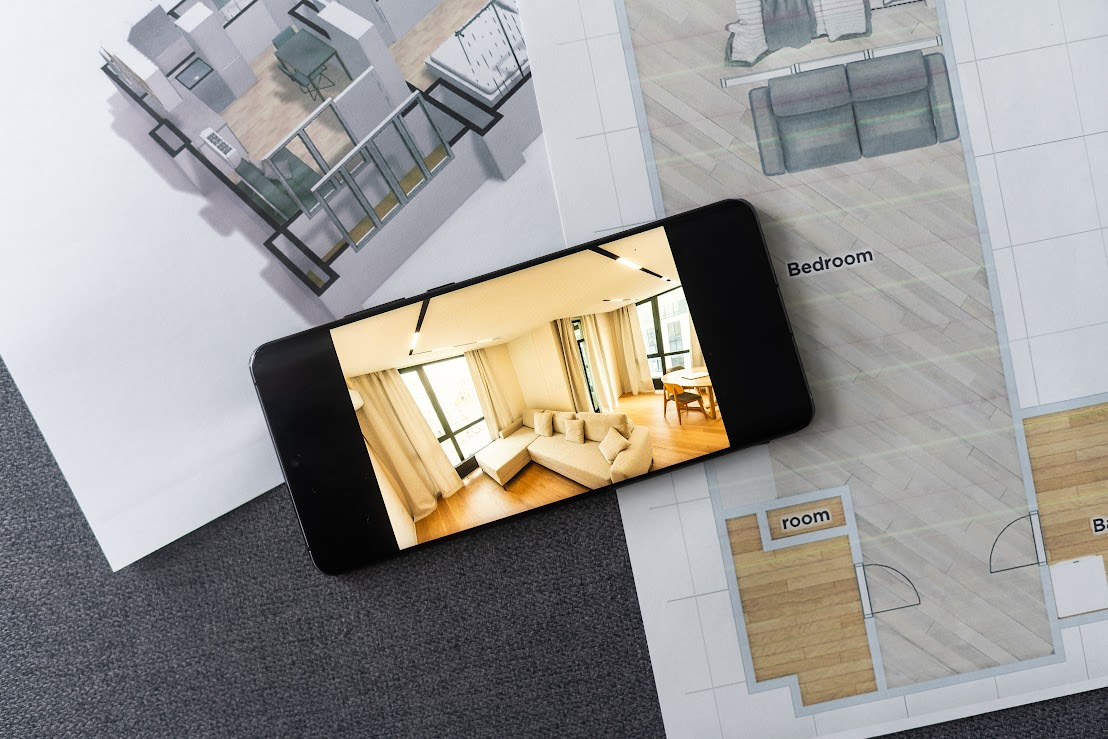Virtual tours are no longer just a novelty for residential real estate—they've become an essential tool for commercial building owners, managers, and renovation teams. As demand grows for remote access and digital collaboration, professional virtual tours of existing commercial buildings offer an innovative and efficient way to assess conditions, plan upgrades, and communicate with stakeholders. These immersive digital walkthroughs go far beyond smartphone footage or stitched images; they combine high-resolution visuals with spatial data, allowing viewers to experience the environment in accurate detail from anywhere in the world. Whether you're preparing for a renovation, selling a property, or managing a multi-site portfolio, virtual tours provide a comprehensive view of what's truly inside the walls.
The Importance of Virtual Tours Before Design Decisions
Before making any renovation or investment decision, stakeholders require a clear and accurate understanding of the building as it currently exists. Professional virtual tours offer that clarity. These tours allow viewers to explore each floor, room, and corridor without setting foot on the property. With high-definition 360-degree photography and spatial data integration, a virtual tour reveals everything from ceiling height and finishes to lighting conditions and equipment placement. For aging commercial buildings, this level of insight is invaluable—especially when original documentation is missing or outdated.
How Virtual Tours Improve the Planning Process
When renovation teams begin scoping a project, they rely on accurate visuals and measurements to inform decisions. Virtual tours streamline this planning phase by providing a digital reference of existing conditions that’s accessible anytime, anywhere. Architects and engineers can revisit the space virtually as often as needed, avoiding multiple site visits and reducing travel costs.
Supporting Design Decisions
Rather than relying solely on notes or 2D photos, professionals can examine the virtual tour to verify layouts, window placements, and circulation paths. This examination helps align early design decisions with real-world limitations and opportunities.
Identifying Problem Areas
Virtual tours make it easy to identify problem areas—such as damaged ceilings, inaccessible mechanical rooms, or outdated electrical systems—that require attention in renovation plans. Teams can annotate issues directly in the tour interface, streamlining communication and collaboration.
Enhancing Stakeholder Collaboration
Virtual tours allow property owners, designers, contractors, and consultants to work from a shared visual platform. Everyone sees the same data, which minimizes confusion and speeds up approvals.
Professional Tools That Power Effective Virtual Tours
Creating an effective commercial virtual tour requires more than just a camera. Professionals use a blend of scanning equipment, editing software, and spatial modeling to capture the building in its current state. The result is a detailed, navigable experience that reflects both the layout and condition of the property with exceptional accuracy.
High-Definition Image Capture
High-resolution cameras capture 360-degree images at every significant point throughout the building. These images are then carefully stitched and color-corrected to reflect actual conditions. Lighting, angles, and exposure are carefully calibrated to ensure a consistent, professional look throughout the tour.
Laser Scanning and Point Cloud Integration
For added precision, many virtual tours incorporate LiDAR or laser scanning to generate point clouds. These allow the virtual tour to include accurate dimensions and be overlaid with business information modeling (BIM) or CAD files. This integration makes the tour not just visually immersive but also technically sound for renovation planning and documentation.
Walkthrough Path Customization
The tour isn’t just a slideshow—it’s a curated experience. Professionals map the most logical routes through the building, ensuring viewers move intuitively from space to space. Strategic navigation points are chosen to highlight key areas and reduce confusion during the digital walkthrough.
Using Virtual Tours in the Pre-Design Phase
One of the most powerful uses of a virtual tour is during the pre-design phase. When design professionals begin working on older commercial properties, they often face unknowns that can slow progress. A virtual tour helps bridge that information gap, delivering real-world visual context right from the start. With spatial data built into the tour, architects can verify measurements and simulate layout options. Interior designers can assess lighting and finishes, while MEP engineers can pre-plan system routes. The tour serves as a digital counterpart to the building—offering insight without obstruction. It accelerates early-stage collaboration by providing all stakeholders with a shared visual baseline before they step on site.
Virtual Tours Help Coordinate Across Technical Disciplines
Virtual tours help streamline coordination across the various technical disciplines involved in renovation projects, including architects, civil engineers, HVAC consultants, and fire safety experts. These professionals all require a shared, detailed understanding of the existing site to work efficiently, and virtual tours provide that unified visual reference. When every team member can access the same immersive walkthrough, it reduces miscommunication, prevents design conflicts, and ensures key conditions aren't overlooked. Many virtual tours are compatible with BIM and CAD platforms, allowing designers to overlay proposed systems directly onto real-world visuals, improving accuracy during modeling.
Enhancing Facility Management With Virtual Tours
After renovations are complete, virtual tours continue to provide value. For building operators and facility managers, a well-executed tour acts as a living record of the space. It allows teams to revisit mechanical rooms, access points, or tenant suites without disrupting operations. These tours also support preventive maintenance planning by making it easy to assess areas that may require attention over time visually.
Equipment and Access Visibility
Virtual tours help facility staff locate mechanical rooms, electrical panels, water shutoffs, and other essential components—without relying on memory or paper records. This immediate visual access improves response times during routine checks and urgent repairs.
Maintenance Planning Made Easier
With high-resolution visuals and 3D data, managers can plan inspections, identify wear patterns, and schedule proactive maintenance before issues arise. It also helps contractors quote repairs more accurately without requiring an in-person walkthrough.
Virtual Tours for Emergency Readiness
First responders and safety coordinators can utilize virtual tours to become familiar with building layouts, exit routes, and equipment locations. This level of awareness enables faster and safer responses in emergencies. It also aids in drafting emergency action plans tailored to the specific spatial conditions of the facility.
Virtual Tours in Leasing and Commercial Sales
Virtual tours offer a significant marketing advantage for real estate brokers and commercial property owners, allowing potential tenants or buyers to explore a space at their convenience. This advantage is especially valuable for attracting remote or out-of-state clients, who can evaluate a property without the need for travel—making it ideal for leasing in business parks, medical centers, or office buildings where in-person tours are less practical. Because these tours provide an accurate, unaltered view of the property, they foster transparency and build trust, eliminating concerns about misleading photography or hidden flaws.
Ensuring Accuracy and Quality in Virtual Tours
Not all virtual tours are created equal. A poorly executed tour can mislead viewers or omit important details. That's why it's crucial to collaborate with professionals who utilize precise technology and adhere to best practices. Quality virtual tours are both visually accurate and technically reliable, allowing teams to make informed decisions with confidence.
Quality Control in Scanning
Professionals ensure that all scans are complete, accurate, and free from visual distortions. They may return for reshoots if lighting or obstructions affect the initial capture. This attention to detail ensures that even hard-to-see areas, such as utility closets or service corridors, are accurately documented.
File Format and Accessibility
Virtual tours should be viewable across multiple platforms—desktops, tablets, and mobile devices—and compatible with standard software. Files are often hosted online for remote access or embedded into project dashboards. Ensuring compatibility across devices also makes collaboration easier for geographically dispersed teams.
Ongoing Updates
Some teams update the tour as the project progresses, creating versioned walkthroughs that document construction stages or phased renovations. This evolving documentation becomes a valuable asset for tracking changes, verifying milestones, and supporting future upgrades.
Why Virtual Tours Are Ideal for Older Commercial Buildings
Older commercial properties pose specific challenges that virtual tours can help overcome. With outdated floor plans, inconsistent maintenance records, and unknown system configurations, these buildings necessitate a more thorough investigation. A professional virtual tour uncovers the reality of what's there—supporting more thoughtful planning, more accurate budgeting, and safer construction workflows. Instead of guessing based on assumptions or waiting for surprises in the field, teams get a clear picture from day one. Virtual tours also reduce the need for repeated site visits, saving time and minimizing disruptions to building occupants. In many cases, they reveal critical details—such as inaccessible spaces or structural obstructions—that traditional surveys alone might overlook.
Virtual Tours That Move Projects Forward With Confidence
Professional-grade virtual tours rely on more than basic photography—they're built on accurate, real-world data. Using advanced 3D scanning, panoramic imaging, and spatial modeling, today's virtual tour specialists create digital walkthroughs tailored to a wide range of commercial needs. Whether the goal is a complete renovation, marketing a property, or managing multiple facilities, high-quality virtual tours offer the clarity and confidence teams need to move forward effectively.
Visit the LNE Surveys blog for more resources on commercial building analysis, survey technology, and renovation planning tools built for today’s digital workflows.




